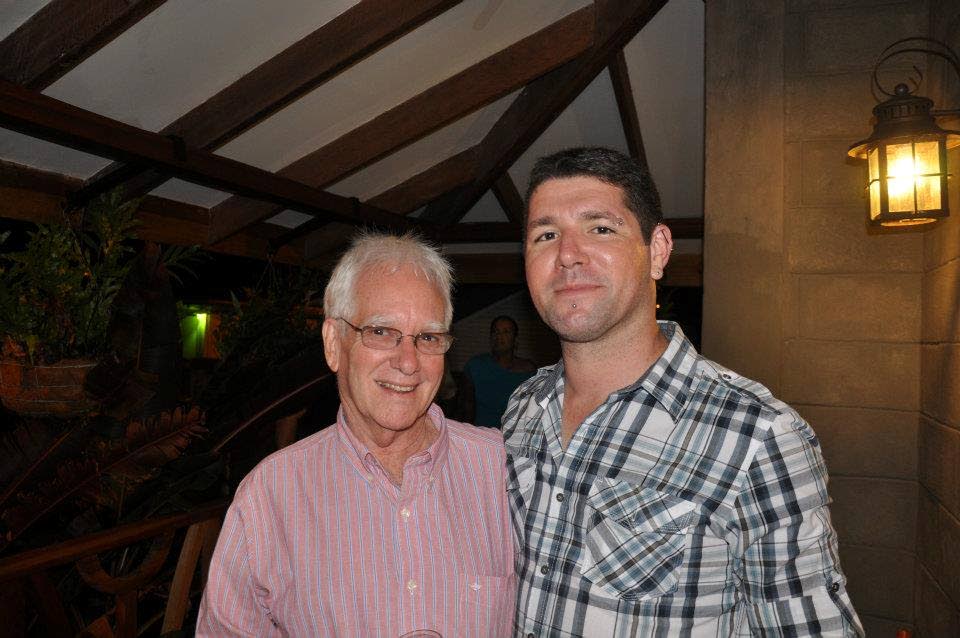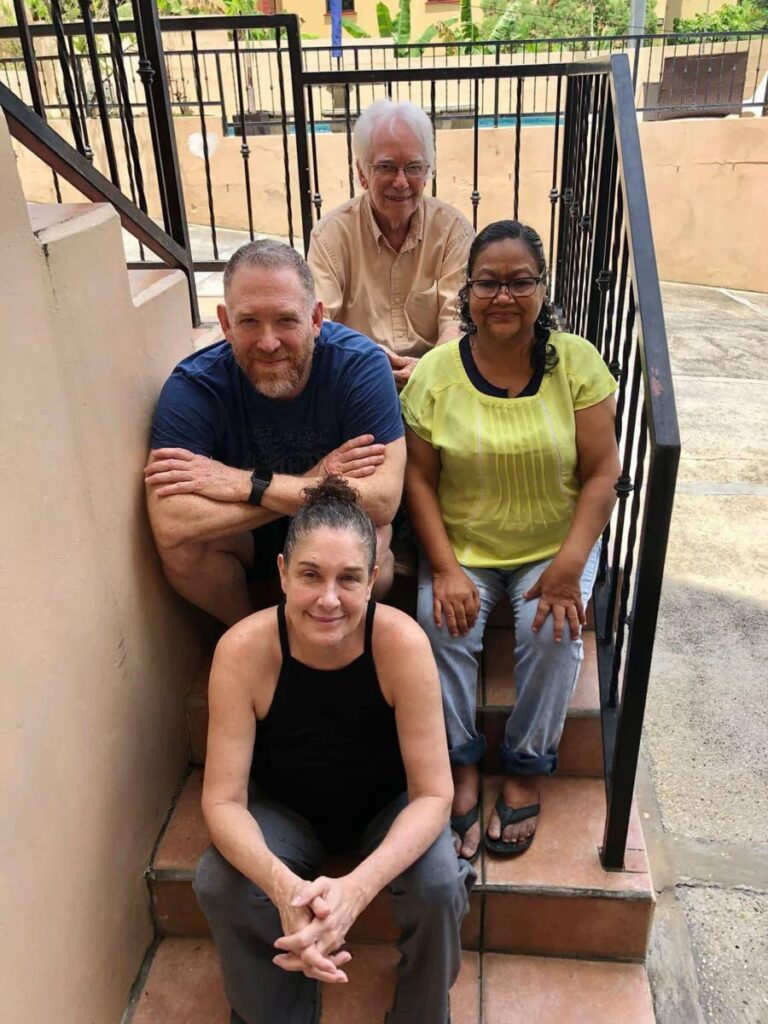Connecting art and architecture

Pat Ganase's tribute to architect and art historian Geoffrey MacLean
Geoffrey MacLean came to the publishing company Key Caribbean sometime in the 1970s.
He had returned to Trinidad as an architect practising in Dominica and was a new member of the Trinidad and Tobago Institute of Architects. With a portfolio of impressive and innovative buildings in Dominica – public buildings incorporating the work of Dominican artists – he was nominated to produce TTIA’s annual journal.
In meetings with the publishing company, his committee was livened by Geoffrey’s unconventional imagination and encouraged to think outside the box.
The result was Environ, a magazine of TT architects thinking about appropriate construction and town planning. Two issues were produced, entirely black and white inside. The magazine took on the challenge of the Piarco airport upgrade at the time, including the removal of Carlisle Chang’s mural in the arrival hall, The Inherent Nobility of Man.
Though Environ could not sustain itself beyond two issues, Geoffrey became a regular visitor to Key Caribbean. He enjoyed the artistic and public side of art and architecture, and brought the extensive Palmiste housing development project, for which he was town planner, to the advertising agency – by then Key had acquired Atlas Advertising Agency – to develop logo, brochures and a publicity campaign.
The campaign included artist Noel Vaucrosson painting a series of views on the estate before it was excavated for roads and infrastructure, and a parang festival in the pasture.
For his site visits, Geoffrey and I would drive to the Palmiste site office opposite the pasture, where we would have a lunch of Debe trainline treats – doubles, kachouri, saheena, baiganee – provided by Robert May.
On those trips, Geoffrey told me the history of Palmiste and his own life story. He was professional and passionate about his work, but also happy and witty. I met his brother John and Jennifer, who were planning to migrate to Australia. He took me to visit homes he had worked on in St Joseph Village, introduced me to friends and clients; and arranged for features in Key’s Homemaker magazine.
Meetings in Port of Spain were likely to take place over lunch at The Outhouse, the rustic lunchtime restaurant run by his wife Karen, mother of Dominic and Sian. I heard the story of Kirsten, his Amerindian daughter adopted in Dominica. As his family grew, with 16 grandchildren and six great-grandchildren, his deep love for each child was always obvious in the way he talked about them.
Ours was a friendship built on good humour – we laughed at the same human foibles – but also mutual interests. In the 1980s, Geoffrey founded Aquarela Galleries (with Mark Pereira) to show the work of local artists, with a publishing arm. He published facsimile editions of Cazabon prints and Views in the Island of Dominica. He researched, wrote and published a biography of Cazabon.
He worked with Mary and Noel Norton to compile and publish the collection of photographs in Noel Norton’s Trinidad and Tobago.
In 1991, he conceptualised and created the art magazine Galerie, published by MacLean Publishing, which also produced an illustrated biography of Boscoe Holder. He created catalogues for many artists and contributed to many publications on art.
When I moved to Santa Cruz to run the farm and hatchery, Geoffrey designed a cottage for us that would stand apart from the family home; it was a lovely gesture, though it was never built.
He was a regular visitor to our farm, sharing Christmas and New Year’s meals with us. He made roast beef and Yorkshire pudding one time; and I told him how to cook his Christmas turkey (breast down after the first hour). The farm was a casual, spacious, outdoors place. We had created a large patio off the kitchen at the edge of the vast front lawn; this was the liming spot, as comfortable for a meal as for a water party, using the inflatable dinghy as a pool. Many bottles of red wine were consumed there.

Amid plans for the 1992 Summer Olympics, with Minshall as part of the design team, Geoffrey travelled to Barcelona, bringing back photos of that lovely city and especially Gaudi’s structures.
In 2001, I asked Geoffrey to design my house. Geoffrey was always enthusiastic about new land, and especially hill sites. His own house is solidly and comfortably located on a slim Cascade hill lot. He had designed the lovely nature cabins at Trois Rivieres in Dominica and had a good feel for simple traditional architecture, and I trusted his instincts.
He took me to see a house he had built in Cascade; one visit and I knew it would work. Of course, there were modifications to the original design: more porches that brought the forest into the house.
Geoffrey was a natural networker, creating connections that felt like extended family. He mentored many young artists who gravitated to his open, trustworthy personality. Through Geoffrey, I became acquainted with Isabel, architect turned chocolatier, and entered the world of Cocobel and the modern gingerbread cottage where Geoffrey and his partner Martin Mouttet co-ordinated art shows and events at Medulla Gallery. Together, Geoffrey and Martin collected an archive of the biographies of most of TT’s important artists. They also supported many artists venturing into their first shows.
It is to his credit that so many buildings and art publications bear his stamp. It is also to his credit that his work was always for the love of doing what he was good at, architecture, and what he was passionate about, art. He evaluated the art collections of private and government institutions and is influential in the heritage societies of TT. He was an advocate for preserving through publication what is worthwhile to be cherished in our country, in both the natural and built environments.
Every discussion with Geoffrey seemed casual and spiked with humour, becoming more worthwhile with time. For Geoffrey and me, our conversation lasted almost 50 years.


Comments
"Connecting art and architecture"